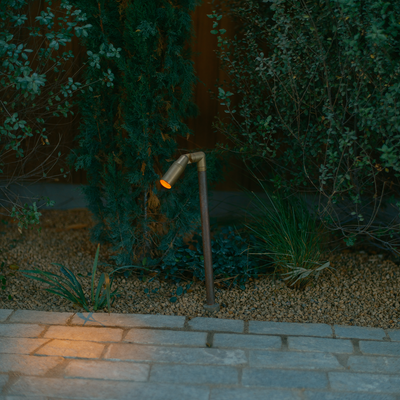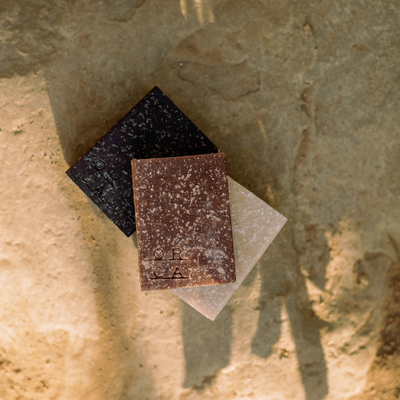Plants +
People
A study of the symbiotic relationship between
humans and the gardens they tend to.
Artist Lucy Augé finds her rhythm in the quiet shifts of nature. Based in Bath, Somerset, her practice is guided by the changing seasons and the fleeting details that define them — a fallen leaf, a branch in bloom, a shift in light.
Lucy draws inspiration from the Japanese concept of shichijūni kō — the 72 micro-seasons that divide the year into moments as brief as a few days. Each piece becomes a meditation on presence and process: the ink, the paper, the gesture, all rooted in observation.
For Lucy, to make art is to participate in the cycles of nature.
lucy augé
017 lucy augé
region: somerset, england
plant community: quercus spp, betula spp, borylus avellana
photography: hana snow and roo lewis
"I feel so closely connected to the natural world that it was inevitable it would become the focus of my work."
What first drew you to working with nature as a medium? Was there a specific moment when you realized its potential?
I first began working with gall ink, a natural ink historically made from oak galls, growths formed on oak trees by wasp larvae. The ink has a deep, complex tone that changes subtly over time, and I was drawn to that sense of living materiality, that what I was painting with was itself a product of nature.
From there, I became interested in Sumi ink, a traditional Japanese ink made by grinding soot (often from pine or oil) with animal glue and water. It has an incredible richness and depth, and a meditative quality in the way it’s prepared and used.
Painting from nature is essential to me, I need to be physically present in the landscape to understand scale and proportion. I like creating work that feels close in scale to the real thing.

Your work is deeply rooted in observing seasonal change. How do you begin your day or week in the studio — is there a ritual or rhythm that guides your process?
The rhythm of my work shifts naturally with the seasons — earlier mornings in winter to make the most of the light, longer days in summer when there’s more time and energy to create. My mornings often begin with responding to emails and messages from collectors, future collectors, and followers of my work. I enjoy this part of the day; it feels like an ongoing conversation and a way of bringing people along on the journey.
Afterward, I move into the studio. I usually focus on one main piece each week, inspired by the Japanese 72 micro-seasons but grounded in what I observe here in Somerset. Alongside that, I spend time experimenting with new materials and forms. This rhythm of making and exploring feels essential, ensuring each piece receives the care and attention needed to become an heirloom for a future collector.
What are the 72 Japanese micro-seasons (shichijūni kō) and how does this inform your work?
The 72 Japanese micro-seasons (shichijūni kō) are a traditional way of dividing the year into very fine, three-to-five day periods, each defined by subtle changes in nature — from the first appearance of blossoms to the arrival of migratory birds.
In my work, I’ve adapted this approach to explore the Somerset countryside around me. Each micro-season becomes a lens through which I observe and respond to the landscape. from the shriveled leaves of “false autumn” in late summer to the first blossom of spring.By working in this way, I can capture fleeting, often overlooked moments and translate them into my pieces, creating a rhythm of making and changes year on year.

dryopteris dilatata
(broad buckler-fern)
________________________________
Dryopteris dilatata, commonly known as the broad buckler-fern, is a deciduous fern belonging to the Dryopteridaceae family. With arching, finely divided fronds forming a dense, shuttlecock shape, it prefers partial to full shade and is common in woodlands and damp habitats.
heracleum sphondylium
(hogweed)
________________________________
Heracleum sphondylium, commonly known as hogweed, is a tall perennial plant belonging to the Apiaceae family. Preferring moist, nutrient-rich soils in full sun or partial shade, it attracts a wide range of pollinators.
Can you share more about your relationship to the natural world? How does this inspire your work?
I feel so closely connected to the natural world that it was inevitable it would become the focus of my work. Most weekends are spent walking and exploring different landscapes, or reading books that deepen my understanding of nature, such as How to Read a Tree by Tristan Dooley. I try to share these moments on my Instagram, so it becomes more than a portfolio of my art — it reflects the life I live in rhythm with the landscape and seasons.
How do you go about sourcing the materials for your body of work?
For me, the materials come first. I often collect and store things, like vintage papers or unique pigments, and wait until the moment feels right to use them. For example, recent graphite studies were intentionally minimalist, allowing these beautifully soft, handmade papers to take centre stage. My materials often dictate the work, and I’m gradually building a library of different surfaces and media to suit whatever I want to depict.
In a world that often values permanence, what draws you to the temporary and the cyclical?
In a way, I can’t help but be drawn to the temporary and the cyclical, as nature itself is always in flux. Even a century-old tree will never look the same from year to year, and a painting of it would inevitably be different each time. I am also drawn to permanence, and I try to imbue my work with a sense of history by sourcing materials from Europe’s oldest mills, some in operation since the 14th century, and using inks crafted by generations of makers. I want each piece to capture a unique moment, giving its owner a token of that place and season, while being created on paper that has itself stood the test of time.
How do you go about sourcing the materials for your body of work?
For me, the materials come first. I often collect and store things, like vintage papers or unique pigments, and wait until the moment feels right to use them. For example, recent graphite studies were intentionally minimalist, allowing these beautifully soft, handmade papers to take centre stage. My materials often dictate the work, and I’m gradually building a library of different surfaces and media to suit whatever I want to depict.

acer pseudoplatanus
(sycamore maple)
________________________________
Acer pseudoplatanus, commonly known as the sycamore maple, is a large deciduous tree belonging to the Sapindaceae family. With broad, five-lobed green leaves and mottled gray bark, it develops a domed canopy that provides ample shade. Flowering in spring with clusters of yellow-green blooms, it thrives in full sun to partial shade.
salvia pratensis
(meadow clary)
________________________________
Salvia pratensis, commonly known as meadow clary, is a perennial herb belonging to the Lamiaceae (mint) family. Native to Europe and western Asia, it features upright spikes of violet-blue flowers that bloom from late spring to midsummer.






















